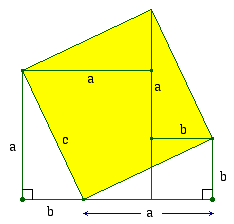Proof is, of course, a core issue in math education.
In the traditional model, it is taught as part of a tenth grade all-geometry class. This has in fact not worked so well for most students. As more and more students have been taking that class, at a younger and younger age, the intellectual challenge has been reduced by turning the writing of proof into a mechanical exercise (two-column proofs with strict guidelines), while at the same time tracking students who are perceived to be less likely to succeed in this enterprise into no-proof classes (sometimes called "inductive" or "informal" geometry.)
Many math teachers and curriculum developers, reacting to this problematic situation, have worked on injecting interesting mathematics into lower-track geometry classes, with some measure of success. Several arguments are raised in favor of this approach: the old method did not work for most students; students need some grounding in actual geometry before proof is meaningful; our country does not need more mathematicians as much as more engineers, scientists, and statisticians -- in other words people who use mathematics, not people who do mathematics.
There is much merit to those arguments, but in my view some reformers have gone too far away from teaching proof, true to American education's tradition of extreme pendulum swings, which go along with a loss of perspective and set us up for backlash. For one thing, this approach has reinforced the existing paradigm: upper tracks are condemned to a mind-numbing forced march through a traditional text, memorizing theorems and combining them in two-column proofs. Lower tracks do some interesting work, but are shielded from proof.
I have attempted to navigate a middle path. Along with my colleagues at the Urban School of San Francisco, I have developed a geometry course which tries to incorporate both geometric meaning and formal deduction. We introduce formal proof in the second half of the course, once students have developed some visual and logical sense while working on key geometric concepts, such as angles, circles, and the Pythagorean theorem. The heart of this process is a unit on quadrilaterals, during which students make conjectures, and then use counter-examples and proofs to sort out which of those conjectures are true, and which false.
Unfortunately, even this more sensible approach is too difficult for some and insufficient for others. Back when I was teaching, I tried to offer more to my stronger students in 11th-12th grade electives, where I introduced proof by mathematical induction and proof by contradiction (Infinity), and some geometric proofs about transformational geometry and about polyhedra (Space) at an age and to a group where there is more chance of success.
I do all this not because I believe that writing mathematical proofs is an important job skill for most people, but because it is a foundational component of intellectual culture the world over, and what many consider to be the essence of mathematics. All our students deserve an introduction to this way of thinking.
